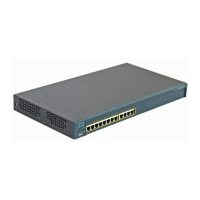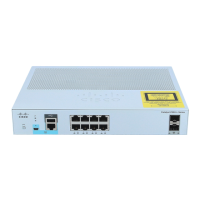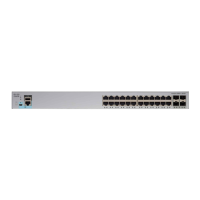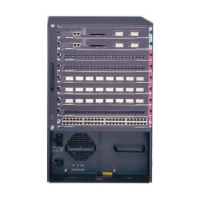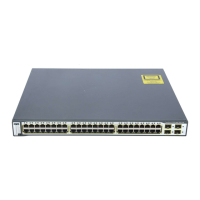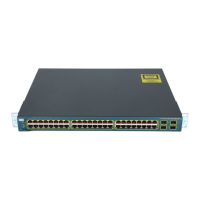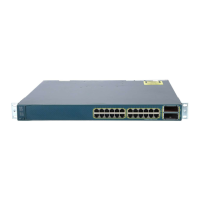Chapter 6 Configuring the System
Controlling IP Multicast Packets through CGMP
6-46
Catalyst 2900 Series XL and Catalyst 3500 Series XL Software Configuration Guide
78-6511-05
For CLI procedures, refer to the Cisco IOS Release 12.0 documentation on
Cisco.com for additional information and CLI procedures.
Controlling IP Multicast Packets through CGMP
CGMP reduces the unnecessary flooding of IP multicast packets by limiting the
transmission of these packets to CGMP clients that request them. The Fast Leave
feature accelerates the removal of unused CGMP groups. By default, CGMP is
enabled, and the Fast Leave feature is disabled.
End stations issue join messages to become part of a CGMP group and issue leave
messages to leave the group. The membership of these groups is managed by the
switch and by connected routers through the further exchange of CGMP
messages.
CGMP groups are maintained on a per-VLAN basis: a multicast IP address packet
can be forwarded to one list of ports in one VLAN and to a different list of ports
in another VLAN. When a CGMP group is added, it is added on a per-VLAN,
per-group basis. When a CGMP group is removed, it is only removed in a given
VLAN.
Note The same multicast MAC addresses cannot belong to both CGMP and
Multicast VLAN Registration (MVR) groups. CGMP does not dynamically
learn addresses that are MVR group members. If you want CGMP to learn an
address that is already an MVR group member, remove the address from the
MVR group.
Conversely, you cannot add an address to an MVR group if it is already a
CGMP group member. If you want an address that is already a CGMP group
member to be an MVR group member, remove the address from the CGMP
group, and then statically add it to the MVR group. For information about
MVR, see the “Configuring MVR” section on page 6-49.
